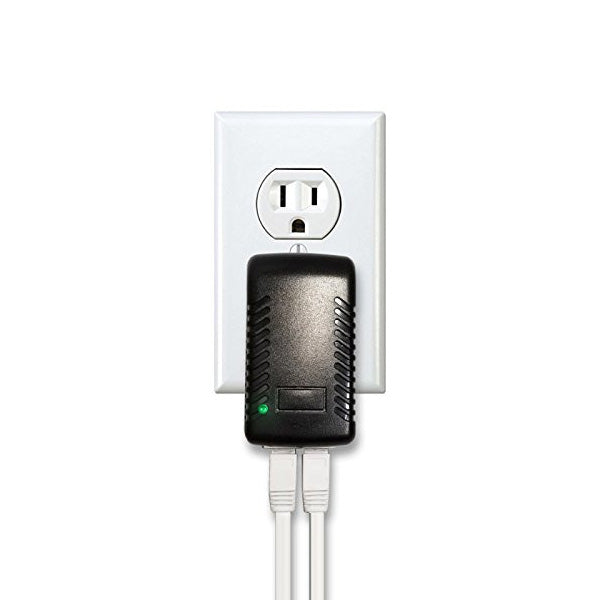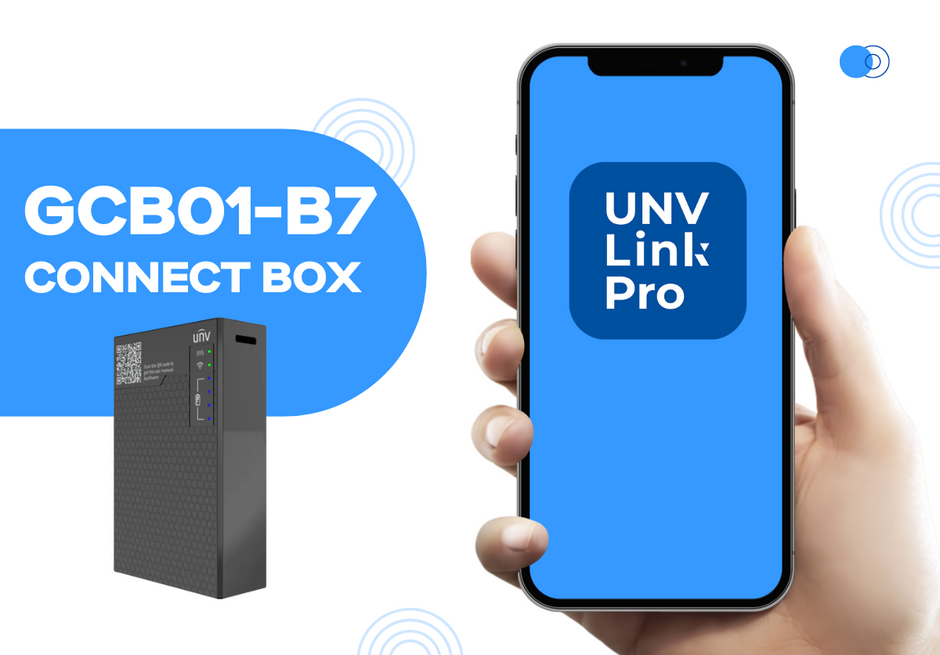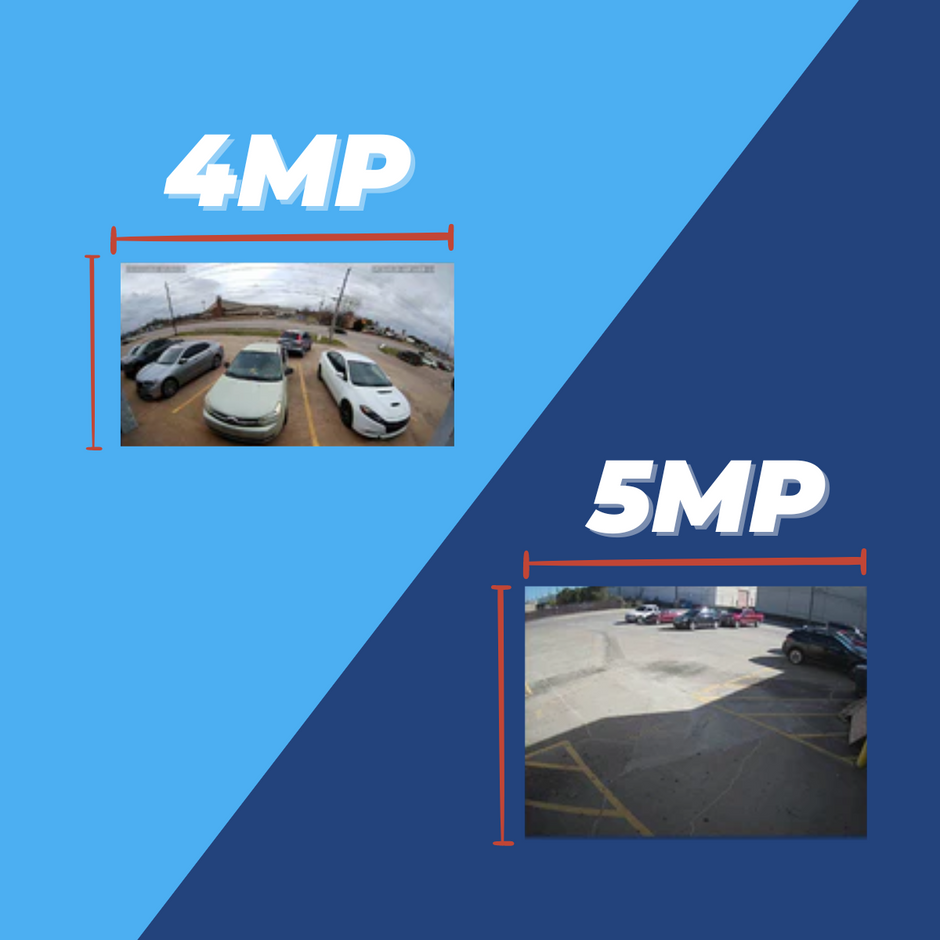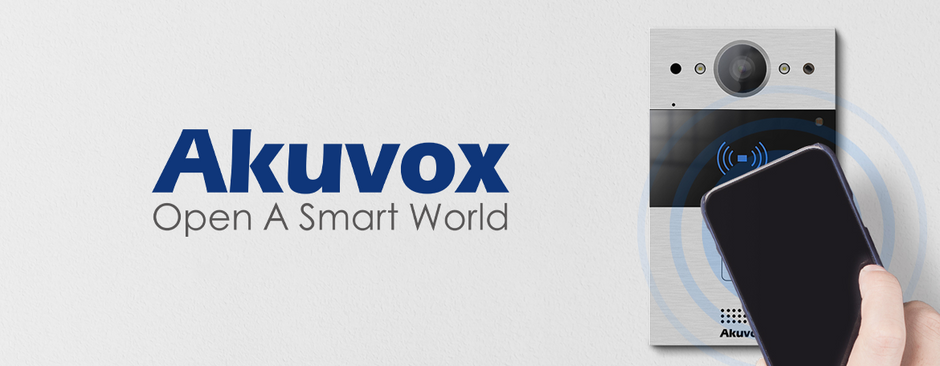Running multiple cables to your security cameras can be a real pain. But you know what’s less of a pain? Running only one cable to each camera! How is that possible, you ask? It’s simple. Power over Ethernet.
What is Power over Ethernet? Power of Ethernet (or PoE) is the process of using wires already built into an Ethernet cable to run electricity in addition to network data. You can use PoE both to connect devices to your network and to power them up with just one Ethernet cable.
Throughout the rest of this post, we’ll talk about how PoE works and how to harness its power for security applications. We’ll also talk about the limitations of PoE, but more importantly, how to overcome those limitations.
Life Before Power over Ethernet
An IP security camera needs two things to work properly. First, it needs power. Once you connect your camera to a power supply, it’s now fully functional. It’s recording video, but there’s no way to communicate with the camera to see that video or to manage the camera’s settings. That’s where your local network comes into play.
So to get your camera set up on your network, all you have to do is connect it to your router or to a switch with an Ethernet cable.

So there you go. Two cables. One camera. But what happens if you have four cameras? Or eight cameras? Or 48 cameras? Running two cables for each camera can get expensive and time consuming.
But come on, we’re not in the 20th century anymore. It’s 2020! Sure, we might be in the thick of a global pandemic, crashing economy, and a divisive political climate. But at least we have Power over Ethernet! There’s no reason why you should still be running two cables to connect your IP security cameras.
If you connect your Ethernet cable to a Power over Ethernet switch, you can now ditch your power supply. That’s because Ethernet cables are capable of connecting your camera to the network and supplying it with power.

In this post, we’re going to explain how this works. But first, I want to introduce you to our PoE products here at Nelly’s Security.
IPCamPower Power over Ethernet Products
For PoE products, we only carry one brand, because really, it’s the only brand we need: IPCamPower. As the brand name suggests, IPCamPower products were designed for one purpose and one purpose only: to power IP cameras. This is unique in the networking industry, because these business-class PoE products are optimized specifically for IP security camera systems.

IPCamPower has several different products that we’re going to be looking at today. We have PoE injectors, full PoE switches, ranging from 4 port all the way up to 48 port. We also have PoE extenders here, which we’ll talk about in a bit.
Now let’s talk about how these products provide power and data connectivity to your security cameras with only one cable.
How Does Power Over Ethernet Work?
Let’s use this little injector as an example. Let’s say you’re planning to set up just one single security camera on your property. All you need is to pick up one of these single port PoE injectors.

At the bottom of the injector you’ll see two ports labeled “data in” and “data and power out.” And it really is that simple. Run an Ethernet cable from your standard switch or your router into the “data in” port, then run an Ethernet cable from the “data and power out” port to your security camera. Once your camera is plugged in, it will instantly get the data from your network, the power from the injector, and with that single Ethernet cable your camera will be fully functional.
It’s the same concept with the full 8, 4, 16, 24, and 48 port switches. The difference is, the single ports are just an injector that you add to your router or switch; the multi-ports are full switches that already have the PoE injector built into it.

You can see how Power over Ethernet makes installing IP security cameras cheaper and much easier, since you don’t have to invest time and money in a ton of different cables.
The secret here is actually inside the Ethernet cable.

Inside that cable, you can see we have all these twisted pairs of wires, which are creatively called… twisted pairs. We have four of these, eight cables total. For our purposes here, PoE uses two of these pairs to transmit data and two of these pairs to transmit power.
This PoE standards IEEE 802.3af (PoE) and 802.3at (PoE+) both use two twisted pairs for power and two for data. There is actually a newer PoE standard that uses all four twisted pairs for both power and data, allowing them to transmit power at higher wattages: IEEE 802.3bt. We do sell one 4-port switch that is capable of pushing power at this bt standard. But for the most part, the output for 802.3bt is more powerful than what we need for video surveillance, even for most giant, power-hungry PTZs. So most IPCamPower PoE equipment uses just those two energized pairs.
It’s all thanks to the construction of the Ethernet cable that we’re able to use those inner cables for multiple purposes.
IPCamPower PoE Switch Overview

Let’s take a closer look at one of these switches. This is our 8-port PoE switch. But I know what you’re thinking. Wait a minute. That switch has ten ports. Why is called an 8-port switch?
That’s a good question and a valid point. There are ten ports here. But there are only 8 PoE ports. The two additional ports on the end are non-powered, meaning you won’t be able to power your cameras with these. These are called uplink ports, which are used for connecting your switch to other network devices. You’ll use one of these to connect your switch to your network, for instance, or to a router. You can also use one of the uplink ports to connect your NVR, which may or may not have a PoE switch built into the back of it.
The other eight ports are fully rated for PoE, and can produce either 802.3af or 802.3at.
What’s the Difference Between IEEE 802.3af and 802.3at?
The difference between af and at has to do with the amount of power that is transmitted. 802.3af is standard PoE and can transmit up to 15 Watts of power. 802.3at is PoE+ and can transmit up to 30 Watts of power. 802.3ab is PoE++ and can output 60 Watts or more. But PoE+ is just fine for the majority of video surveillance scenarios.
IPCamPower PoE Switch Watt Budgets
So since these ports support both PoE and PoE+, that means each individual port on this switch can output up to 30W if it needs to. But the total amount of wattage that this switch can output is 130 Watts.
If you’re following along and doing the math, you’ll realize that 8 ports times 30W means there should be a total budget of 240 Watts for the whole system. But the thing is, not all of your cameras are going to need the full 30W. Most standard fixed lens cameras will only take 6 or 7 Watts of power at most. Even this giant PTZ with a 33x zoom only takes 16W of power. You could connect 8 of these massive cameras and still not max out your system.
There are some larger cameras that do eat up more power, up to 20 and even 30 Watts. But you’re not going to be building an entire system of these massive, power-hungry cameras. So for the most video surveillance applications, you won’t have to worry about going over that 130 Watts.
Check out the table below for a breakdown of all of our PoE switches with the amount of power each port can push alongside the total power budget for the switch. This will give you a good idea of how much Wattage you’ll be working with depending on the size of your system.
| MODEL NUMBER | NUMBER OF PORTS | SINGLE PORT OUTPUT | TOTAL SYSTEM BUDGET |
|---|---|---|---|
| IPCP-4P2G-AF2 | 4 | 30W | 65W |
| IPCP-4P2G-BT1 | 4 | 60W | 250W |
| IPCP-8P2G-AF2 | 8 | 30W | 130W |
| IPCP-8P2G-EXAF* | 8 | 30W | 130W |
| IPCP-16P2G-AF2 | 16 | 30W | 200W |
| IPCP-24P2G-AF2 | 24 | 30W | 250W |
| IPCP-24P2G-EXAF* | 24 | 30W | 250W |
| IPCP-48P4G-AF2 | 48 | 30W | 400W |
Limitations of Power Over Ethernet
Let’s talk about the limitations of PoE, and really with Ethernet in general. We have only two twisted pairs carrying our data signals. When those signals travel across long distances, due to resistance, we end up transmitting less and less data. Our network data signals can typically only travel through this cable for about 300 feet, so with just a PoE switch and an Ethernet cable, you won’t be able to lay cable runs longer than 300'.
But there are a couple of ways that IPCamPower helps you get around those limitations. The first one is integrated right here in this switch.
Overcoming PoE Limitations With “Extend Mode”

I still haven’t talked about this tiny little switch here on the switch. Well that switch on the switch switches the switch’s maximum distance capabilities from standard to extended. When your switch is in extend mode, you can extend your Ethernet cable runs up to 800 feet!
How does this work? Magic. But in the words of Rumplestiltskin from ABC’s hit drama Once Upon a Time, all magic comes with a price. And the price of this magic? Network speeds.
In standard mode, all eight ports are capable of carrying data at speeds of 100Mbps. When you turn extended mode on, you can get much longer distances out of your cable run, but that max speed drops from 100Mbps to 10Mbps.
That may sound like a drastic drop in speed, and it is, but for the most part you’re not really going to notice it. If you refer to our help guides for setting your camera’s video settings, you’ll see that even for 4K ultra HD 8MP cameras, the recommended bit rate is a little over 8Mbps. So unless you have a few 12MP cameras connected to your switch, that speed drop likely isn’t going to affect you.
If you have other devices connected to your switch, like a computer using a bunch of data, then you’re gonna see more issues with this speed drop.
But when it’s just for video surveillance, go ahead and flip that switch if you need to go further than 300 feet. You’re not going to notice much impact on your system.
It’s important to note that not all of our IPCamPower switches have this extend mode. We have two of these, an 8 port and a 24 port. You can recognize these in the table above by the EXAF model numbers.

If you get the 24 port that comes with extend mode, keep in mind that only the last eight ports, port 17 through 24, are capable of that distance boost. The first 16 ports are only available in that standard mode, with speeds up to 100Mbps and distances up to around 300 feet.
So what if you need to take your cable runs further than 300 feet but you don’t have one of these switches that come with extend mode? You can still get around those length limitations with a PoE extender.
Overcoming PoE Limitations with a PoE Extender

A PoE extender is essentially a 2-port switch that takes a PoE input and outputs PoE to these two ports. Place one of these right before that 300' mark, and you can take your cable runs an additional 300'.
Need to go further? Daisy chain up to two of these to go 900'. We don’t recommend using more than two. After that you’re gonna start noticing some pretty significant data loss.

One great feature of these extenders is that they don’t need to be plugged into a power source. They’re simply taking that PoE input and outputting it. Keep in mind that it’s only outputting 15 Watts of power, at the PoE IEEE 208.3af standard. Even if you input PoE+ at 208.3at, it’s still going to output 15W.
We do have one of these extenders that can handle speeds up to 1Gb, in case you’re using this for non-PoE related tasks. But for video surveillance, we won’t be getting up to those speeds anyway.

Another great feature of these extenders is its splitting capabilities. Since there is one PoE input and two PoE outputs, you can split your PoE cable into two at the installation site. Think of the possibilities! If you have to install two cameras in the same general location, you can now run one single Ethernet cable from your PoE switch to the installation site. Then using this extender, simply split the PoE input into two, and you can now install two cameras without running multiple Ethernet cables!
So there you go, there’s a couple of different ways for you to get past those distance requirements and run extra long cable runs while maintaining the awesome advantages of PoE.
There is another way to get longer PoE cable runs using ubiquiti radios. But that’s a topic for another blog post. (If you’re interested in that, be sure to subscribe to our newsletter so you don’t miss it!)
Let’s go ahead and wrap up this post with two questions.
Should I Be Using PoE?
Absolutely, no question about it. You should be using PoE. Again, it’s 2020, there’s no reason why you should still be running two cables to all your security cameras. One Ethernet cable, two functions. Power. Network. It’s efficient. Work smarter, not harder, use PoE.
Should I Be Using IPCamPower Products?
There are a few different scenarios that IPCamPower can help you out.
Single Camera Installations
If you only have one standalone security camera, you could definitely benefit from one of these single port injectors. We have a PoE injector and a PoE+ injector. Check the specs on your camera, but you probably only need the 15W PoE injector. If you’re powering a bigger camera, like a power-hungry PTZ, we do have the PoE+ option.
Small Systems
If you have a small surveillancd system with an NVR, you may or may not need a PoE switch. The reason is there’s a good chance your NVR comes with a PoE switch in the back, so you can simply run Ethernet cables to your NVR and call it good. However, if your NVR doesn’t have a PoE switch in the back, you’re going to need one of these IPCamPower switches to power your system.
If your NVR does have a PoE switch in the back but you need to run cables longer than 300 feet, then you’ll definitely want to pick up some of these IPCamPower PoE extenders. They can be a real lifesaver!
Large Systems
If you have a bunch of security cameras, say in a commercial setting, you’ll definitely want to check out some of these PoE switches. These can help you out a lot. Again, we have 4, 8, 16, 24, and 48 port switches. With those uplink ports, you can chain these up and power an entire system of cameras using only Ethernet cables. These are the products we use here at Nelly’s Security to power all of our cameras, and we can’t recommend them enough.
Now What?
Hopefully you learned a thing or two about PoE. If you did, leave us a comment letting us know what you took away from this blog post. Do you currently use PoE switches? Do you have any other tips for saving time and money in an IP security camera installation? Let us know down below!










